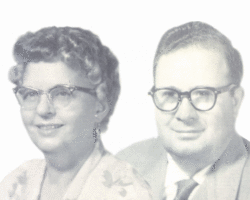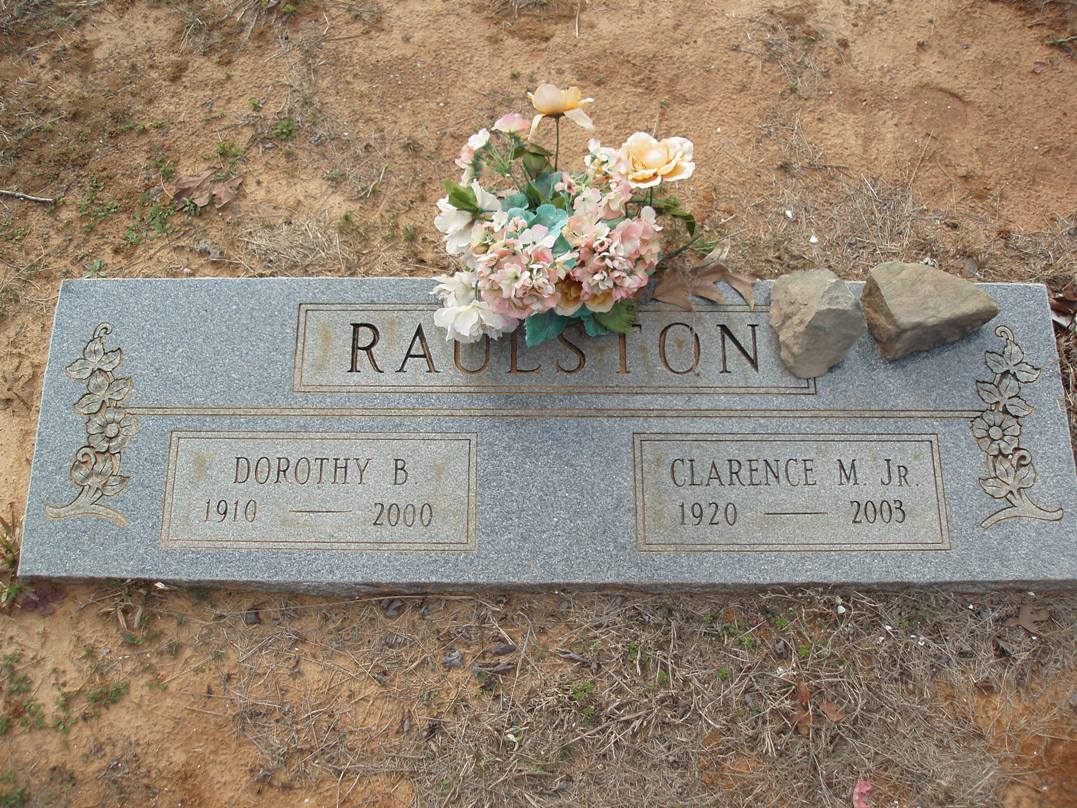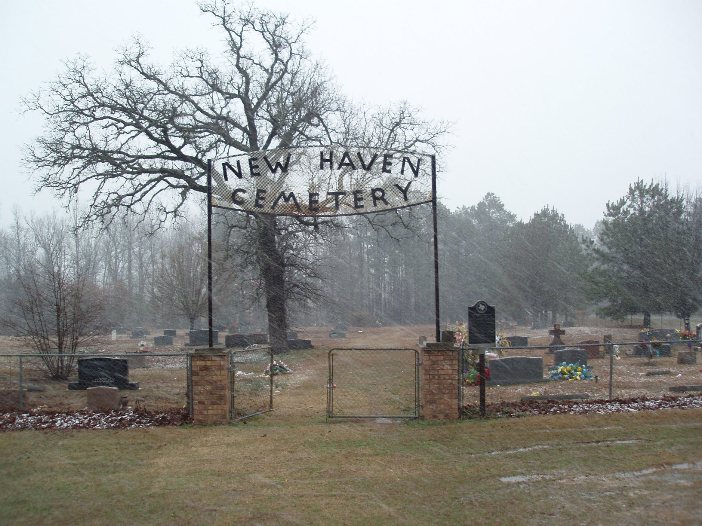Written by C.M. Raulston, Jr. - I was born in the Northwoods in 1920 in the house where my father and his father were born. I had passed my 19th birthday when I left the farm to seek a new way of life. I had passed my 55th birthday when I returned to the same farm in retirement. I did college work at University of Texas-Austin, Temple university-Philadelphia, TCU-Fort Worth and UT-Arlington. Additionally, I completed many courses of study at professional symposia across the country. I am a life time senior member of The Institute of Environmental Scientists. I tell you all this to give you some idea of the culture-shock I experienced upon my return to the Northwoods after an absence of some 35 Years.
When the telephone man had departed after connecting our four-party telephone, I picked up the receiver and heard some dear lady say, "There jest ain't no tellin' what Jim Ed done with it". I repeated what I had just heard to my wife and all she could manage was a very weak," oh dear." Having been born in the Northwoods and having grown up here, makes me an "insider" who is privy to much information which would require many years of research for an "outsider" to obtain. Those things I do not know by instinct I am allowed to learn by observation and a few careful questions. If my neighbors become convinced that this work will be widely published many doors will close to me. They are eager to have it recorded in the local library in the hope that their descendants will read it and understand the virtues of the " old ways."
In 1926 we made a trip, in a covered wagon, to Millerton, Okla., a distance of some twenty miles from our farm, to visit an older sister to my father and her family. We had to leave early and drive hard to cover that distance in one day. It was understood by all that after a drive like that we would stay for at least a week. As was customary and necessary, daddy tied his saddlehorse, a big bay gelding called Prince, to the back of the wagon. The saddlehorse was the extra car we see tied behind campers going cross-country today. Our family at that time was daddy and moma and three kids, ages two through six, I was the oldest. We crossed the Red River, ten miles North of our farm, on a ferry which was powered by men pulling cables which were anchored to both banks of the river. We arrived about two hours before sunset. Aunt Lela had a grown son called, Alley, who saddled up a horse and he and daddy went racing back to the river and bought a big buffalo fish, then raced back home in time to clean it for supper. (Called dinner today). My parents had loaded a mattress and springs into the back of the wagon. My younger brother, Garland, and I slept there during our visit. I don't remember seeing a single automobile during that entire trip.
The great depression of the 1930s was felt on the farm later and to a lesser degree than in the cities. In the city the family bread winner lost his job suddenly and the family had no recourse except to get in the soup line. On the farm, life's three essentials - food, clothing, and shelter - came directly or indirectly from the land. It meant that we had to work harder and get by with less, especially those items that came from town that cost money. Life on the farm was never easy and it would become even less so during the depression years.
Father was made acutely aware that hard times were upon him in 1933 when younger brother, Earnest G. Raulston, returned to the farm looking for a place to live and the chance to earn sustenance for his family. The next year the other brother, George Farris, returned with his family to seek a new start.
Grandfather William G. had acquired a tract of land across the road North of the home place. The two tracts comprised a total of over two hundred twenty-five acres which was divided between the three brothers in 1934, each taking seventy-five acres more or less. Farris moved into a house across the road that had previously been used as a house for share-croppers. Earnest took the Northeast tract and built his home there.
In 1934 my parents had a family of four boys and a girl. Betty Katherine Raulston was bom September 13, 1924. She died June 2, 1934. In the weeks following the funeral, my Father found it very difficult to come up with the sixty-five dollars he owed for the casket. A badly needed milk cow, stock feed, and other produce had to be sold. My Mother was never the same sweet, pacific person, even after her terrible grief had been assuaged by the soothing lotion of fading memories.
It was a great joy and comfort to her when on August 24, 1938, a second daughter, Cora Sue was born.
In the depression years money was very scarce throughout the nation. This caused prices to be very low. Some prices I remember are: a 48 pound bag of flour cost 65 cents, gasoline was 9 cents per gallon, and cigarettes (ready-rolls) were 12 cents a pack, a boy's overalls were 75 cents, a spool of thread was 5 cents, and ten hours hard work at the sawmill got you 75 cents.
The Bible says, "and that is the end of it." In the 1930s Clarksville was the trade center for an agricultural society and everyone in the rural areas went to town on Saturday. Our native was about 40 years of age in 1934 and his father was a member of the senior generation who was cared for at home by his children and grandchildren. Because of his disabilities this elderly man was not expected to participate in the bone jarring work on the farm and he spent a lot of time studying his Bible and committing an astounding portion of it to memory. It was not unusual, on a Saturday in town during the warm months, to find four pairs of these oldtimers, in separate places, having Bible discussions with a small crowd gathered round lending support with a heart-Felt "AMEN" when a point was well made.
Written by C.M. Raulston, Jr. - I was born in the Northwoods in 1920 in the house where my father and his father were born. I had passed my 19th birthday when I left the farm to seek a new way of life. I had passed my 55th birthday when I returned to the same farm in retirement. I did college work at University of Texas-Austin, Temple university-Philadelphia, TCU-Fort Worth and UT-Arlington. Additionally, I completed many courses of study at professional symposia across the country. I am a life time senior member of The Institute of Environmental Scientists. I tell you all this to give you some idea of the culture-shock I experienced upon my return to the Northwoods after an absence of some 35 Years.
When the telephone man had departed after connecting our four-party telephone, I picked up the receiver and heard some dear lady say, "There jest ain't no tellin' what Jim Ed done with it". I repeated what I had just heard to my wife and all she could manage was a very weak," oh dear." Having been born in the Northwoods and having grown up here, makes me an "insider" who is privy to much information which would require many years of research for an "outsider" to obtain. Those things I do not know by instinct I am allowed to learn by observation and a few careful questions. If my neighbors become convinced that this work will be widely published many doors will close to me. They are eager to have it recorded in the local library in the hope that their descendants will read it and understand the virtues of the " old ways."
In 1926 we made a trip, in a covered wagon, to Millerton, Okla., a distance of some twenty miles from our farm, to visit an older sister to my father and her family. We had to leave early and drive hard to cover that distance in one day. It was understood by all that after a drive like that we would stay for at least a week. As was customary and necessary, daddy tied his saddlehorse, a big bay gelding called Prince, to the back of the wagon. The saddlehorse was the extra car we see tied behind campers going cross-country today. Our family at that time was daddy and moma and three kids, ages two through six, I was the oldest. We crossed the Red River, ten miles North of our farm, on a ferry which was powered by men pulling cables which were anchored to both banks of the river. We arrived about two hours before sunset. Aunt Lela had a grown son called, Alley, who saddled up a horse and he and daddy went racing back to the river and bought a big buffalo fish, then raced back home in time to clean it for supper. (Called dinner today). My parents had loaded a mattress and springs into the back of the wagon. My younger brother, Garland, and I slept there during our visit. I don't remember seeing a single automobile during that entire trip.
The great depression of the 1930s was felt on the farm later and to a lesser degree than in the cities. In the city the family bread winner lost his job suddenly and the family had no recourse except to get in the soup line. On the farm, life's three essentials - food, clothing, and shelter - came directly or indirectly from the land. It meant that we had to work harder and get by with less, especially those items that came from town that cost money. Life on the farm was never easy and it would become even less so during the depression years.
Father was made acutely aware that hard times were upon him in 1933 when younger brother, Earnest G. Raulston, returned to the farm looking for a place to live and the chance to earn sustenance for his family. The next year the other brother, George Farris, returned with his family to seek a new start.
Grandfather William G. had acquired a tract of land across the road North of the home place. The two tracts comprised a total of over two hundred twenty-five acres which was divided between the three brothers in 1934, each taking seventy-five acres more or less. Farris moved into a house across the road that had previously been used as a house for share-croppers. Earnest took the Northeast tract and built his home there.
In 1934 my parents had a family of four boys and a girl. Betty Katherine Raulston was bom September 13, 1924. She died June 2, 1934. In the weeks following the funeral, my Father found it very difficult to come up with the sixty-five dollars he owed for the casket. A badly needed milk cow, stock feed, and other produce had to be sold. My Mother was never the same sweet, pacific person, even after her terrible grief had been assuaged by the soothing lotion of fading memories.
It was a great joy and comfort to her when on August 24, 1938, a second daughter, Cora Sue was born.
In the depression years money was very scarce throughout the nation. This caused prices to be very low. Some prices I remember are: a 48 pound bag of flour cost 65 cents, gasoline was 9 cents per gallon, and cigarettes (ready-rolls) were 12 cents a pack, a boy's overalls were 75 cents, a spool of thread was 5 cents, and ten hours hard work at the sawmill got you 75 cents.
The Bible says, "and that is the end of it." In the 1930s Clarksville was the trade center for an agricultural society and everyone in the rural areas went to town on Saturday. Our native was about 40 years of age in 1934 and his father was a member of the senior generation who was cared for at home by his children and grandchildren. Because of his disabilities this elderly man was not expected to participate in the bone jarring work on the farm and he spent a lot of time studying his Bible and committing an astounding portion of it to memory. It was not unusual, on a Saturday in town during the warm months, to find four pairs of these oldtimers, in separate places, having Bible discussions with a small crowd gathered round lending support with a heart-Felt "AMEN" when a point was well made.
Family Members
Sponsored by Ancestry
Advertisement
Advertisement

















